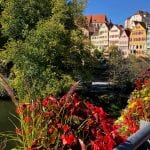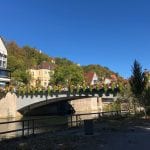16 July, 2018
Yesterday marked my first true adventure in Auckland. Five friends and I woke up before the sunrise, stuffed our backpacks and walked to the port to hop on the 7:30 am ferry to Rangitoto Island. Rangitoto is a dormant volcanic island that rests 20 minutes off the coast of Auckland Central. “Rangitoto” translates to “Bloody Sky” and legend has it that the island used to be home to a couple who were children of the Fire Gods. The flame they built went out as they argued. Enraged, they cursed Mahuika, the Goddess of Fire who felt as though she had been cursed unfairly and conspired with Mataoho, the God of Earthquakes and Volcanic Eruptions to cause an eruption that destroyed the couple’s home and left them stranded on a mountain peak at sea, unable to return to the mainland. This peak in Rangitoto, and the fog that often rolls in above the island is said to be the tears of the couple.
As we approached Rangitoto the sun was beginning to rise and a light grey mist was enveloping the island. Bundled in layers of sweatshirt and rain jackets, we set out to reach the summit by way Summit Track and the lava caves. The trailhead approximated the road up to the summit to be an hour long trek, with a twenty minute detour to explore the lava caves. We began the long trek up, amazed by the lava rock that surrounded us and exposed itself beneath our feet. A light drizzle began to fall and the way up got steep but none of us minded -- we were in it for the long haul.
Almost to the top of mountain we took the detour -- who could pass up crawling through caves of lava rock?! Upon discovering the first cave we shed our backpacks, got down on our hands and knees and crawled into the narrow space of the cave, slowly climbing upwards. Built of the same lava rocks we’d seen on our way, the caves were slick with rainwater, letting the rocks glisten against the light of our flashlights. The second cave we came upon was more of a tunnel, allowing us to walk all the way through with hunched backs to the other end, where a path lead us back to the summit trail.
A continuous steep incline and a height difference of a over a foot among our pack had some of us gasping for breath as we made the final push to the summit. Accompanied by the boys singing traditional Maori songs, we made it to the top. The view was worth the sweat.
The sun was just beginning to peak out from behind the clouds when we reached the summit. It felt as though the sun knew we were there, and wanted us to see Rangitoto’s views in all their glory. After taking in as much of the view as we could and munching on a quick snack, we proceeded down the side of the peak via Summit Road, headed for a trail that would take us around the side of the island for another three hours. The sun still shining we were cheerful as could be, singing and laughing, trying to gently trip each other. A rainbow peaked out just above us as the road took us to McKenzie Bay, perhaps the most picturesque part of the hike.
Nestled along a side path, McKenzie Bay was framed on either side by lava rock formations and various kinds of foliage, with a lighthouse and Auckland Central in the distance. We once again stopped to enjoy the view and take a breath.
As I sipped water from my hydropack and listened to the waves softly break on the rocks, I turned to my friend Paige and said “I can’t remember the last time I was this happy.” Looking around at the group of people we had assembled, feeling the boots on my feet and breathing in clean, post-rain air, I truly couldn’t have been happier.
We continued along McKenzie Bay road, letting it lead us through the trees and along the coastline. The final stretch of the road lead us past the Historic Bachs -- small, one or two room houses that had been occupied by previous caretakers. Each had a small sign with a story of the houses’ origin and owners. Of all the eccentric colors and funky names, one that sat of a short uphill path caught my attention most. “Why Worry”, it was called. The name felt appropriate for the setting.
The end of the Bachs lead us straight back to the port by which we arrived. With a bit of time to kill we sat down to rest our legs and look out at the water. The bluer-than-blue water, smell and feel of fog, and company of my new friends made this challenging day more rewarding that I could have guessed. By far the best part was the time and care we took to see everything. We veered off on every detour, read every informational sign, explored when we found a new place. There was no rush, there was no agenda. Just friends and trails.





































